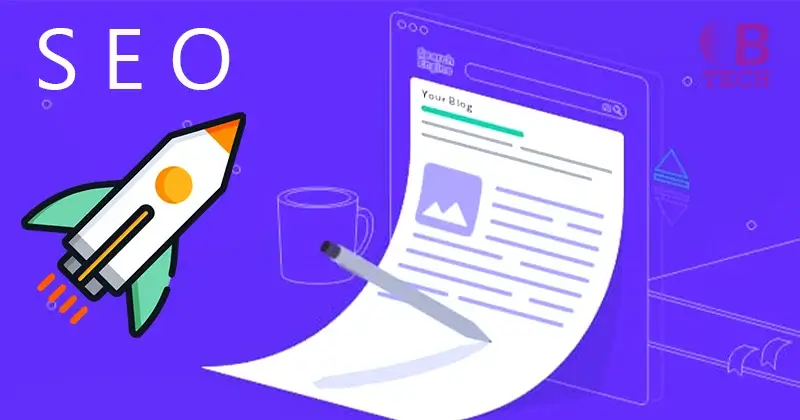In the digital era, many blog-writers focus solely on writing quality and informative content, hoping it will get a good ranking.
However, the SEO world is way more complex. It checks crucial elements, including keywords, meta tags, topics, and formatting. So, to improve the SEO of your blogs, here are some effective tips!
1. Perform keyword research and use them naturally
A vigorous keyword research will help you optimize your content the best. Identify the right keyword for your content. Remember, only 0.0008% of keywords get over 100,000 monthly searches, so choose keywords wisely.
Learn about the competition, search volume, and search intent for each relevant keyword. Choose the appropriate keywords for your blog and naturally use them in the content body, title, metadata, and image alt tags.
However, avoid adding too many keywords. Otherwise, it will make the content sound unnatural, frustrate readers, and deteriorate SEO.
2. Choose better meta tags
Meta tags, including title tags and meta descriptions, help Google understand how relevant your content is to the topic. This, in turn, helps your content receive a better rank on the SERP.
Besides that, meta tags also increase the chances of improving click-through rates, which helps you outrank existing pages on the first page.
However, if you’re unfamiliar with digital marketing key terms (like meta tags, click-through rates, SERP, etc.), it’s better to learn them from a reputable source first.
Moreover, newer marketing terms are being added every other day. So, brushing up on your knowledge and staying updated is always wiser!
3. Add all the topics of the first-page rankers
Check the top-ranking articles on the first page for a given topic. While creating your content, ensure you add all the issues mentioned. This ensures that your content helps a reader more than your competitors’ content.
If you overlook this, your page may not rank well. Of course, it doesn’t imply you can copy their content strategy to get a high rank. Otherwise, your page may get penalized for plagiarism.
Instead, review all the relevant first-page articles and understand what readers want. Specifically, choose content that seems relevant for readers and unique content most first-page rankers have covered.
Fine-tune your content with a unique perspective and clearly understand the unique areas.
For your old published content, periodically review what’s on the first page of Google. Optimize accordingly to boost your rank.
4. Use multiple keywords for the headline
Most blogs try to include their primary keyword alone at the beginning of the headline. As the headline gets the header1 tag, the rank is majorly dependent on this. However, you can make your headlines even better by using two keywords.
For instance, use the primary keyword in the first half and the secondary keyword in the next, like this
<Headline phrase including primary keyword> : < Headline phrase including secondary keyword >
The primary keyword is the target keyword. The secondary keyword, a sub-headline, must offer more information about the article.
However, avoid using this rule on commercial pages. Otherwise, it will be too long for product or asset pages. Readers won’t be able to grasp what the headline implies fast enough if the page promotes products or services.
5. Always ensure the content is engaging
The opening line of your introduction and the sub-headings of the page must be engaging and interesting.
If not, a reader will leave the site immediately. When readers spend less than the optimum time on a page, the search engine perceives the site as low-quality. This worsens the visibility of the website.
On the other hand, when a reader stays on your page for the optimum time, search engines like Google perceive your page as high-quality and improve site visibility.
So, ensure the first paragraph of your website is impactful and relevant to readers’ pain points.
Moreover, format the content optimally using heading tags, bold, and italics to highlight the important parts. But don’t overuse them.
6. Get backlinks
Backlinks convey your page authority and improve search visibility. They make your page valuable enough to get linked by other web pages.
Earning backlinks isn’t under your complete control. However, you can monitor whether other websites mention your brand in their content through free tools like Google Alerts. This way, you find opportunities to earn backlinks.
7. Use relevant and optimized images
Use videos, animated visuals, and other multimedia to entertain the site and retain more readers. Multimedia also helps break down long blocks of several paragraphs.
To explain a specific concept:
- Use images to help readers understand it better.
- Don’t use your page’s default image name, format, or alt text.
- Change the image name to help search engines learn more about your page.
- Add captions to images to help readers understand better.
Conclusion
Remember that SEO improvement is a time-consuming process. So, optimize your blogs with these tips, be patient, and you’ll notice improvements eventually!
SEO Related Article: Unlock China’s Digital Market With Xiaoyan’s Expert SEO Strategies



